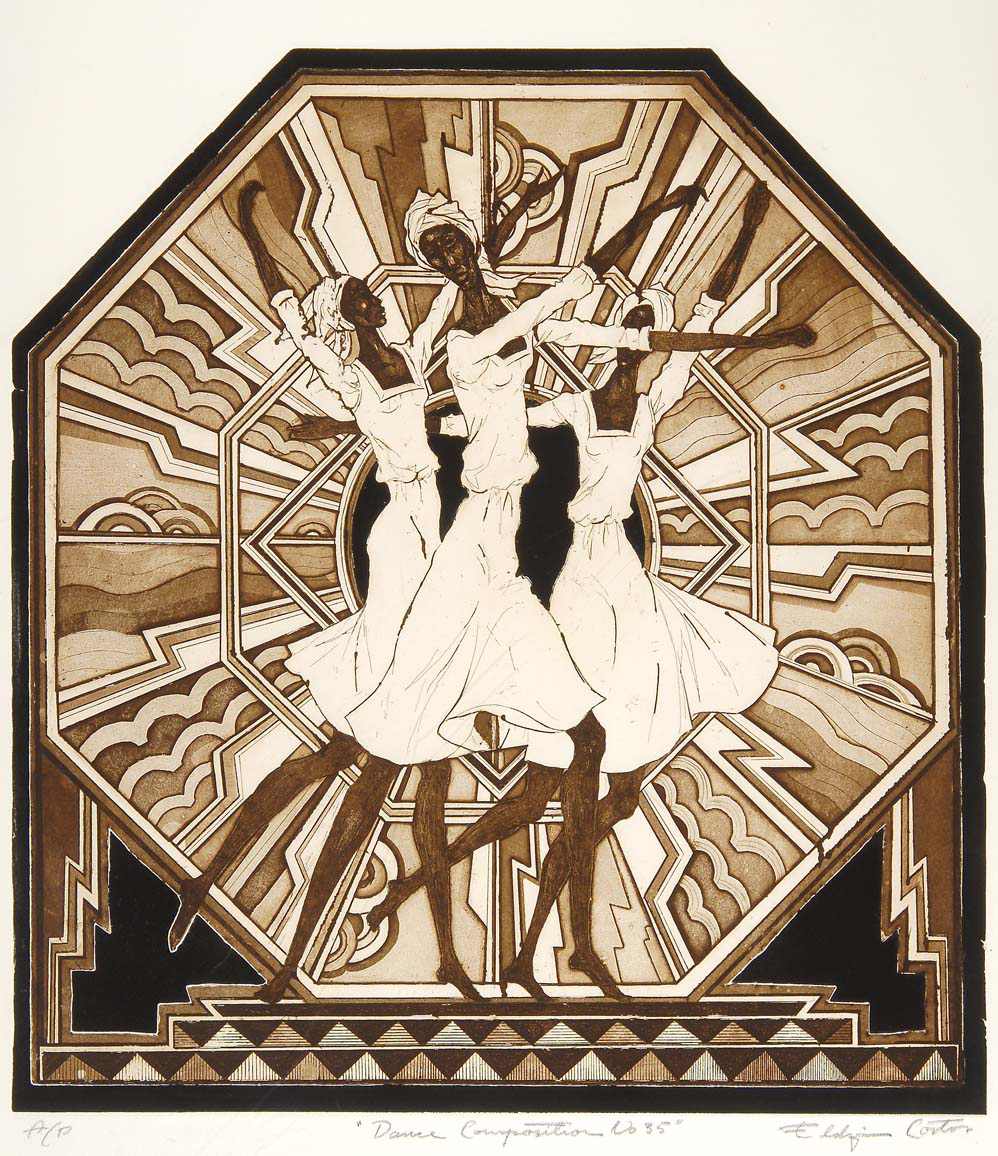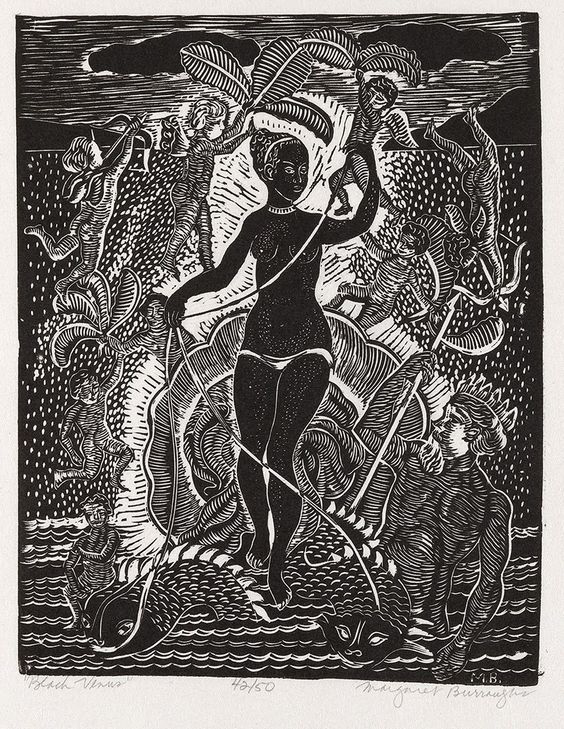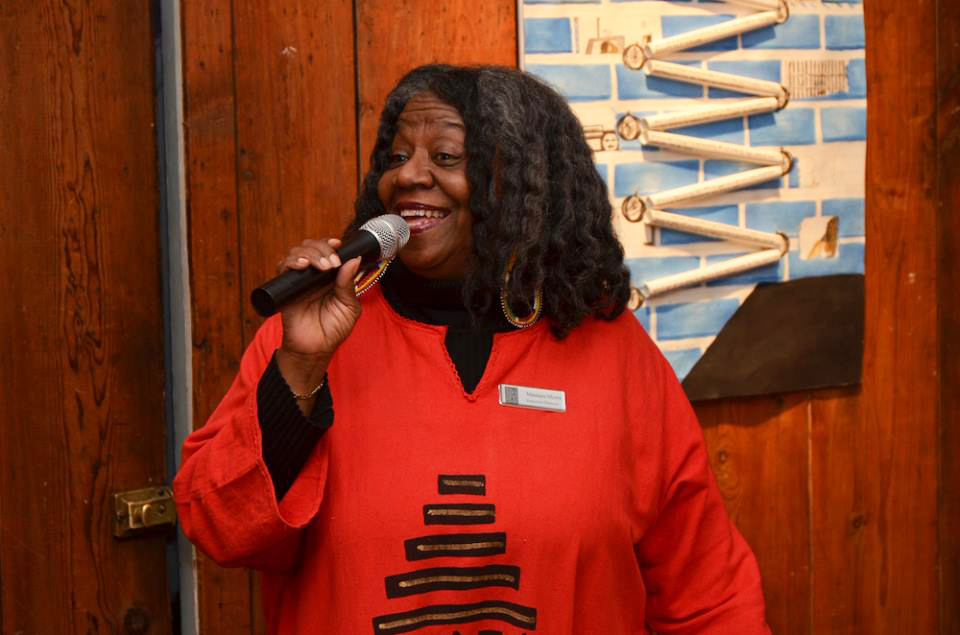Maséqua Myers first walked into the South Side Community Art Center at the age of sixteen. It was in this Bronzeville brownstone that she first took African dance classes, in addition to literary and poetry workshops. Myers went on to become an actress and director, performing in Chicago venues like the Victory Gardens Theatre and the Goodman Theatre from the late sixties through 1982. She also served as one of the first teaching artists to work in Chicago Public Schools through Urban Gateways. She and her husband took a twenty-five year break from Chicago to direct, produce, and perform in Phoenix, Arizona and then Los Angeles before family responsibilities called them home to the South Side. Late in 2014, Myers was asked to become the new Executive Director of the SSCAC. The Weekly spoke to Myers on the Art Center’s third floor and production space, just two days after the opening of their first exhibit of 2016, titled “Bridging Generations: Strong Men Getting Stronger.”
I came to the South Side Community Art Center as a sixteen-year-old. I met people who are now so renowned in Chicago, like Haki Madhubuti—formerly known as Don L. Lee—and Gwendolyn Brooks. Gwendolyn taught classes downstairs, and she would sit at that piano that’s down there and get inspired by the environment to write. It’s wonderful to feel the spirit of this place because there were no other places that African Americans could experience what they experience here, because of racism.
There were no galleries that allowed African Americans to hang their artwork, and so it was founded for a need to have a place to create, to develop, and to share artistically. The Works Progress Administration (WPA) Federal Arts Project was very helpful in making this happen. What the WPA initiative did was to hire instructors, so they were paid salaries. As a result of that we were able to offer classes free, and the community was able to come in and enjoy the expertise of renowned artists without having to pay. That was quite a service to the community, and we attempt to do that still. We make classes very affordable, if it’s not a free experience, and that’s part of our history as well. We have never closed our door in seventy-five years, so we’re very proud of that.
I came here to continue this legacy. No, it’s not a career advancement, but it’s a calling. It’s a mission. I want this place to survive another seventy-five years of existence, because it’s quite motivational, inspirational—especially for those who say they’re going to be artists for a living, be artists for a career. And to be able to reaffirm that that’s okay, that that can happen, makes all the difference in a young person’s life. They get focused, they understand that “If I work really hard, if I educate myself very well, if I sell, if I seek new experiences that give me a well-rounded persona and base to create from, then I have a lot of potential and a lot of opportunity.” That motivation comes from places like the South Side Community Art Center, and since I was inspired that way, I want it to be the same for any other person that comes in these doors.
I believe in this mission. It’s really important to have a creative outlet in the community for so many reasons. One of the major reasons for me is because young people, especially now, don’t have many places to go that are creative and constructive. I would rather see them with a paintbrush than with a weapon in their hand. And if they can get introduced to an environment that pushes that, that’s what happens. I was affected like that as a teen.
Just yesterday I had a fifteen-year-old, come up to the door, take pictures of the public hours signs outside the door. I found out she lived right across the street and she’s an aspiring artist. She had been wanting to come in but she wasn’t sure if she should, so I went out and talked to her. She was inspired. She wanted to know if, indeed, one day if she could have her art on the wall. And I said, “That’s why we’re here. We’re here for you.”
The South Side Community Art Center’s mission is to preserve, conserve, and promote the legacy and the future of African-American artists while educating the community of the importance of art and culture. And our first exhibition of the 2016 season, I believe speaks so well to that. The name of the exhibition is “Bridging Generations: Strong Men Getting Stronger.” “Strong Men” is a poem written by Sterling Brown in 1931, and that was one of his poems that was motivational for me to curate this show.
We’re in a time, presently, where we are talking more about the violence towards black and African-American males: violence towards them by each other and violence towards them by society, and particularly law enforcement. I wanted to be able to stimulate dialogue about the importance of having inner strength and focus to do the right thing. I wanted to give focus to the need to understand that there should be a connectedness with the generations. It’s an African tradition, and it’s an African-American tradition that I don’t believe we should lose sight of.
With these three artists, we have Millennials, Generation X, and then the Baby Boomers, so we’re showing three generations that connect through the art because they draw images that are similar in concept, maybe not in style, but in concept. These three artists understand the importance of knowing your history, where you come from, what your African heritage is; then they know the importance of our American experience, and combining those two helps us to project ourselves into a wholesome future. Not knowing one or another leaves an emptiness, leads to a possibility of not understanding your total importance and worth.
“Bridging Generations: Strong Men Getting Stronger” will be on display at the South Side Community Art Center through April 9..
In honor of Black History Month, Myers has curated a small series of images from the Art Center’s collection to celebrate African-American history, African-American art, and the South Side Community Art Center’s role in preserving that legacy.

I’ve put the two longest-living founding artists together. Eldzier Cortor is the most recently deceased founding artist of the SSCAC; he was the last living founding artist. So he’s what I call our ancestor. He drew realism, abstractions—he was quite diverse. He was a Guggenheim awardee, and that award took him to places like Cuba, Mexico, Haiti. People were just in awe of his ability to capture the environment he saw. He graduated from the School of the Art Institute of Chicago in 1936, around which time he saw an exhibition at the Field Museum of West African art, and loved it. He wound up combining the West African art with European Impressionism; with that he created a different image of the black woman. As you can see in this particular painting, he created an image of grace, of dignity, and of strength. And he did that by elongating the neck and the limbs, giving a graceful, beautiful, dignified persona to the African-American female.

Tony Smith
I chose “Black Venus” because of how important women have been to the founding and the continuation of the South Side Community Art Center, and how important the female is to the grounding of family and to spreading love, nurturing. We often set the moral guidelines of a society, we set moral guidelines in our families, and so in this piece, she’s holding the child up, because we are the teachers of the next generation. We are the first teachers of life, to our younger generation, to those that we bear, so that’s why I chose that.
Dr. [Margaret Taylor Goss] Burroughs was always a serious person, even as a young person. She was the youngest to ever sit on the Board of Directors of the South Side Community Art Center at twenty-three years of age; she gave seventy years of her life to the continuation of the South Side Community Art Center. She wanted to raise the quality of life for African Americans because she was born in 1917, a difficult time for the representation of African-American people. When she travelled outside of the country, to places like Africa, she was so uplifted by the difference in the beauty standard outside of America. She wanted to come back and show people just how proud they can be of themselves, how beautiful they can be, and even though she wanted to teach self-love to black folk, she wanted everyone to understand the beauty of African heritage.
Dr. Burroughs was my Humanities 101 instructor at KennedyKing College, so I have a long history with her. I met her when I was about sixteen and started taking classes; I began dramatically reading her poetry all over the city. One of the poems was “What Shall I Tell My Children Who Are Black?” It’s a lovely poem, and Burroughs talks about all of the negative ways the color black is used for before writing, “I will tell them about their history and how much they can be proud of.” What she taught me was that you didn’t have to hate anybody else to love yourself; in fact, you have to really love yourself before you can really love someone else and appreciate someone else. She taught self-love without self-hate.

